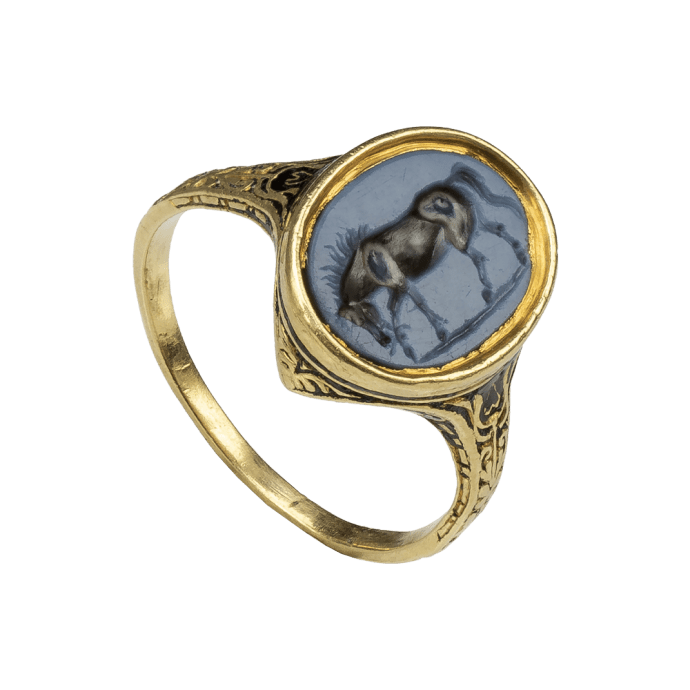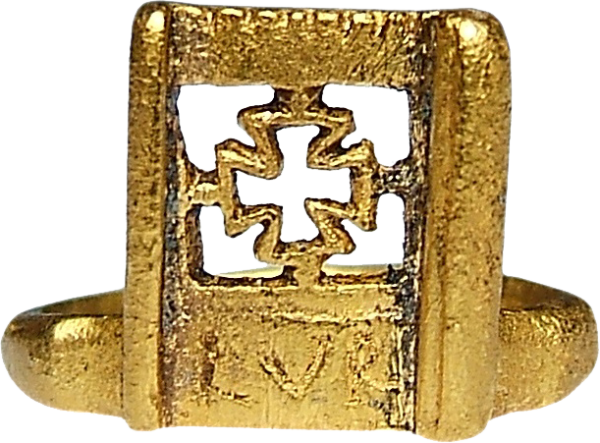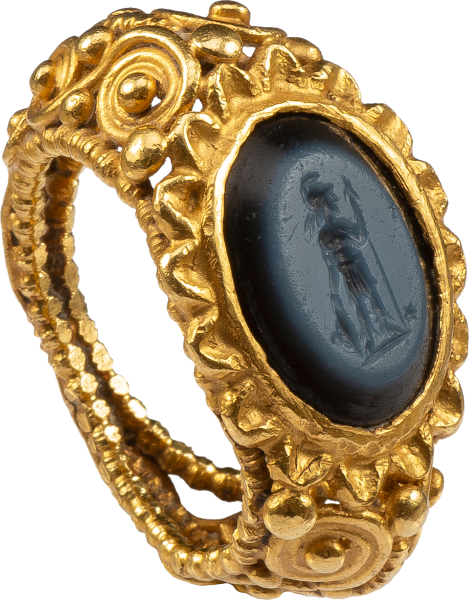





Description
Exceptional and exquiste enamelled Renaissamce ring, set with a handsome Roman intaglio of a horse
In the Renaissance period, ancient cameos and intaglios were highly sought-after collectors’ items. Wealthy owners had them incorporated into signet rings, and in this case, an exceptional and rare ring with sophisticated enameling.
The Roman intaglio reflects the spirit of Humanism during the Renaissance, when there was a revived interest in Classical literature and the arts. The horse motif was most likely the personal choice of the wearer or giver of this ring who would have been familiar with its meaning in Classical Antiquity as a symbol of wealth and power. In Ancient Greece images of horses denoted aristocratic status, were symbolic of heroism and the all-important cavalry. A grazing horse as seen here may have represented a favored racehorse.
Description:
Gold ring with D-section hoop widening towards the oval bezel, plain on the interior and on the exterior the shoulder is decorated in gold against black enamel with symmetrical foliate and floral motifs. The frieze-like decoration continues along the sides of the facetted bezel with dots, dashes and scrollwork, a triangular form with acanthus foliage and fine gold framing line along the base of the bezel with raised mount and fluted collet for a nicolo-agate intaglio. Carved into the bluish grey on brown surface is a grazing horse seen in profile, head bent low. On the underside of the bezel is an elaborate cross motif with scrolls in black enamel against gold. Minor loss of enamel in some areas, through age and wear. The ring is in good wearable condition.
Literature:
Similar elaborately enameled signet rings set with ancient intaglios or Imperial laureate heads can be found in the British Museum, London (Dalton 1912, no. 308); Tarnóczy Collection (Jean Szendrei. Catalogue de la Collection de Bagues de Madame Gustave de Tarnóczy, Paris 1889, pp. 81-2); Hanns-Ulrich Haedeke Collection (Hanns-Ulrich Haedeke. Schmuck aus drei Jahrtausenden. Sammlung Hanns-Ulrich Haedeke, Rheinland-Verlag, Cologne 2000, no. 279).
For representations of horses in Roman times, see: Idit Sagiv. Representations of Animals on Greek and Roman Engraved Gems. Meaning and Interpretations, Archaeopress Publishing, Oxford, 2018, pp. 63-84, and for the motif fig. 17, 1st century AD. For grazing horses on intaglios of the 1st century AD, cf. examples in the Art Institute Chicago (Ref. no. 1986.898); Ashmolean Museum, Oxford (publ.: Martin Henig/Arthur Macgregor. Catalogue of the Engraved Gems and Finger-rings in the Ashmolean Museum II. Roman, Archaeopress, Oxford 2004, no. 9.75) and in a private collection (Beazley Archive, 40009722, Misc 9).
The highly embellished enameling along the hoop and bezel of this exceptional and rare ring is reminiscent of the ornamental prints of the French goldsmith and printmaker Daniel Mignot (active in Augsburg, 1593-1616) which were printed in 1596 (cf. Victoria and Albert Museum, London, inv. nos. E.894-1912; E. 2084-1908; E.2087-1908; E. 2119-1911; E.5208-1910).



